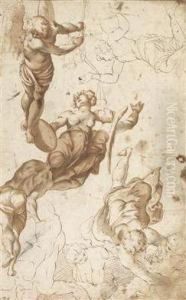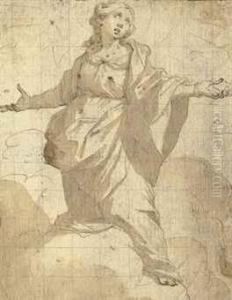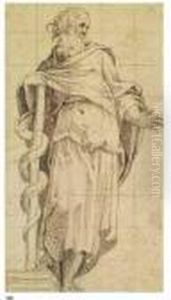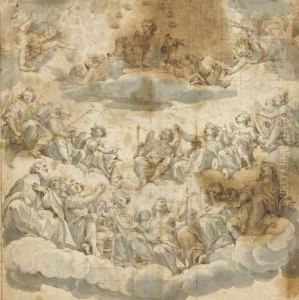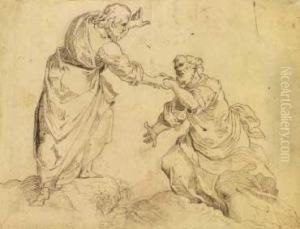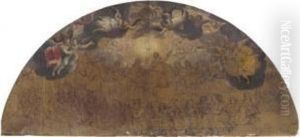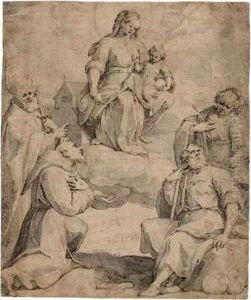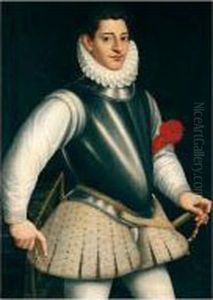Giovanni Battista (Il Malosso) Trotti Paintings
Giovanni Battista Trotti, better known as Il Malosso, was an Italian late-Renaissance painter, born in 1555 in Cremona, Italy. He was a prominent figure in the Cremonese school of painting and was known for his distinctive style, which reflected the transition from Mannerism to the more naturalistic approach of the Baroque era.
Il Malosso studied under Bernardino Campi, a well-known painter of the time, and later worked with Bernardino's cousin, Giulio Campi. These early experiences were fundamental in shaping his artistic style. Trotti's work was also influenced by other prominent artists such as Correggio and Parmigianino, whose works he studied during his travels.
Throughout his career, Il Malosso received numerous commissions for religious works, including altarpieces and fresco cycles for churches in Cremona and surrounding cities. His paintings are characterized by their dynamic compositions, dramatic use of light and shadow, and a rich color palette. He had a particular talent for depicting emotion and movement, which brought his religious scenes to life.
Some of his notable works include the frescoes in the cathedral of Cremona and the Church of San Sigismondo. His altarpieces, often featuring scenes from the life of Christ and the Virgin Mary, were also well-received and contributed to his reputation as a leading artist in northern Italy.
Il Malosso's influence extended beyond his own works; he was a respected teacher and mentor to younger artists, helping to disseminate his approach to painting and contributing to the development of the Baroque style in Italy.
He continued to paint and receive commissions until his death in 1619. Today, his works can be found in various Italian churches and museums, where they continue to be appreciated for their artistic significance and historical value.




